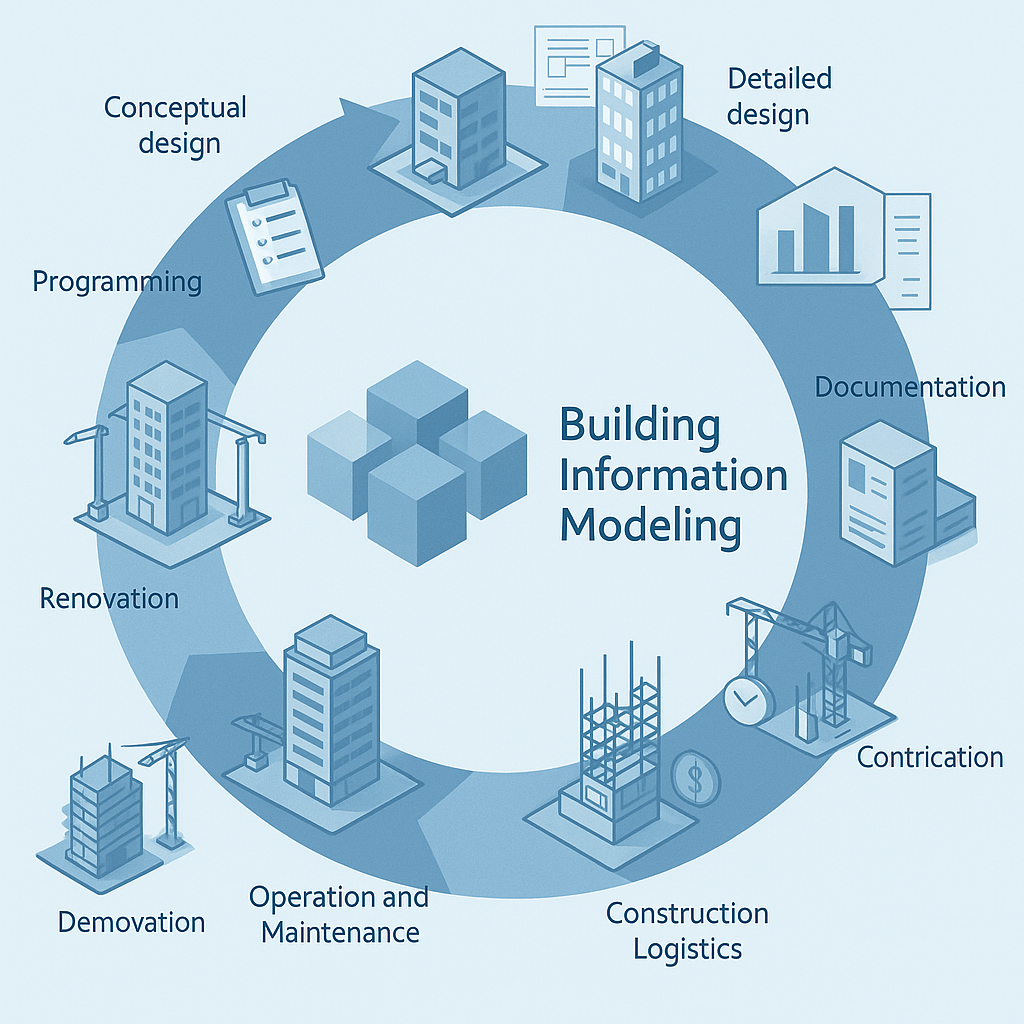In today’s dynamic Architecture, Engineering, and Construction (AEC) landscape, Building Information Modeling (BIM) is more than a tool -it’s a strategic advantage. But even the best technology can’t replace clear roles, structured processes, and a culture of continuous improvement. Here’s how to transform your BIM team into a high-performing unit.
Clarify Roles & Responsibilities
Every successful team starts with clarity. Clearly defined roles and responsibilities help eliminate confusion and foster accountability. Use Responsibility Assignment Matrices (RAM) or RACI charts to map out ownership and make sure everyone knows how their work contributes to the big picture.
Establish a Common Data Environment (CDE)
A single source of truth is critical. A CDE ties all project data together, eliminating silos and reducing errors. It ensures everyone is working from the latest information and streamlines workflows across the team.

Standardize Workflows and Processes
Don’t reinvent the wheel for every project. Standardized workflows create consistency and efficiency across your team. Templates for clash detection reports, coordination meetings, and model checklists save time and reduce errors.
Action step: Regularly review and update these templates to capture lessons learned from each project and continuously refine your processes.
Leverage Automation Tools
Manual tasks eat up valuable time and increase the risk of human error. Automation can be a game-changer. Tools like Rhino Grasshopper scripts can handle repetitive work - like clash detection and data validation—so your team can focus on higher-value tasks.
Foster Transparent Communication
BIM thrives on collaboration. Break down silos and encourage open, transparent communication. Structured coordination meetings and real-time collaboration tools—like Microsoft Teams or Slack - keep everyone informed and engaged.
Embed Continuous Learning
The BIM world evolves rapidly. Make learning part of your team’s DNA. Offer training sessions, bring in external experts, and create opportunities for knowledge-sharing within the team. This keeps everyone sharp and ensures you’re always ahead of the curve.
Track KPIs That Matter
If you’re not measuring it, you can’t improve it. Key Performance Indicators (KPIs) like clash resolution time, model accuracy, and delivery compliance provide valuable insights into your team’s performance.
Actionable insight: Use visual dashboards to track KPIs in real-time. This data-driven approach empowers your team to make informed decisions and adjust course as needed.
Embrace Feedback and Iterate
Perfection doesn’t exist - but continuous improvement does. After each project phase, hold retrospectives to reflect on what went well and what didn’t. Create a safe space where team members can share feedback honestly.
Pro tip: Make these feedback loops part of your culture, not just a one-off activity. Iteration is the key to long-term success.
Key Takeaways
- Clarity is non-negotiable – Clear roles and responsibilities prevent confusion and build accountability.
- A single source of truth is essential – A robust CDE aligns the team and eliminates data silos.
- Standardization breeds efficiency – Templates and consistent processes ensure smooth collaboration.
- Automation is your silent advantage – Leverage tools to save time and reduce manual work.
- Culture is the foundation – Foster open communication, continuous learning, and a feedback-driven environment.
Conclusion
Efficiently organizing BIM team workflows isn’t about using the latest software alone—it’s about creating an environment where technology, processes, and people align seamlessly. By focusing on clarity, collaboration, and continuous improvement, your BIM team can transform challenges into competitive advantages





